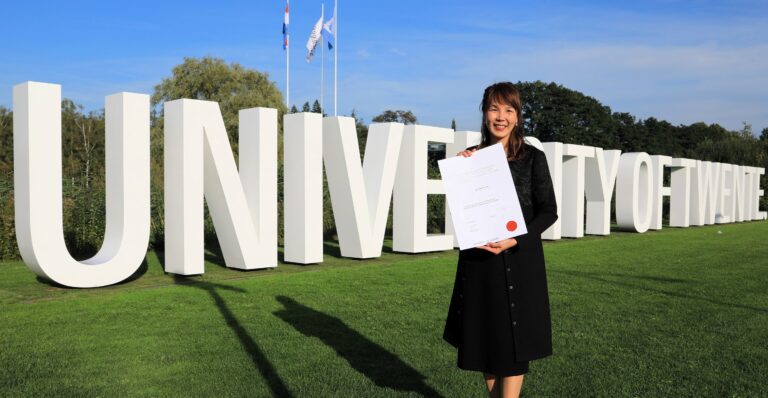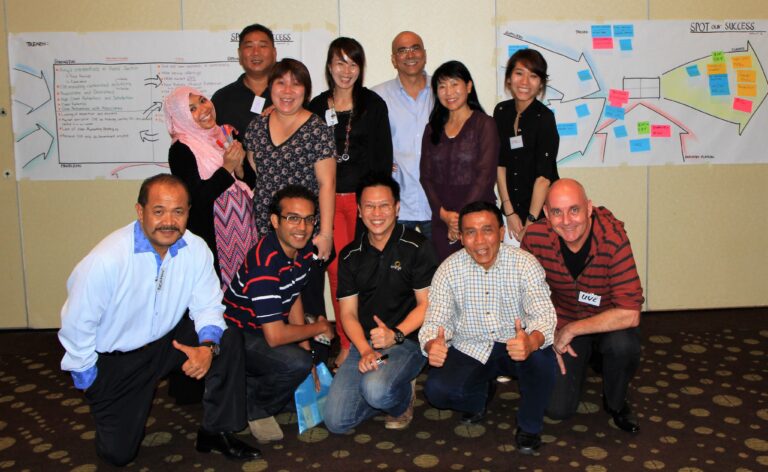Building the Muscles of Your Workforce
About Process Efficiency Sins
Running improvement projects in a wide variety of service organisations over the last couple of years, we had to relearn what we thought we had a good grasp of already. So, we had to restudy the basic drivers of productivity and process efficiency.
Yes, it is certainly possible to drive productivity by process changes. And yes, IT can help to boost it even further.
“Don’t blame the people, blame the process instead!” UK
However, people often greatly underestimate an important source of productivity that we frequently leave untapped – humans.
No, it is not about making your staff run faster to produce more in a certain amount of time. Rather, it is about what your team members do during their available time. This means, it is about their process efficiency.
Case 1: Only 57% Spent on Core Activities
Process Efficiency is Squandered with Non-Core Activities
An analysis of the working pattern of a group of scientists in a lab revealed that they usually spend only 57% of their working hours on their core activities. So, if they would not work overtime to catch up with their core work, this percentage would drastically decrease and the already low customer satisfaction would get even worse.
What do they do the rest of the time? Our time study has shown that they spend 18% of their time on secondary activities. These are support activities that are certainly crucial to the core analysis. However, these activities do not require the qualification of a scientist.
The remaining 25% is spent on administrative activities that could be done by someone you can hire from the next bus stop.
Consequently, they introduced a small admin team and conducted some job redesign activities. As a result, scientists gained time to catch up with their work resulting in increased process efficiency and higher customer satisfaction. And, greater motivation was a side-effect, too.
Case 2: Team of Four Delivers Jobs of 1.6 FTE
Workforce Planning Gone Wrong
A team of four officers were surprised to see the result of their process mapping. They actually spend only 1.6 FTE (Full Time Equivalent = workforce of one full-time staff) altogether on their super critical core activity. This activity is about processing applications for corporate customers who need the approval in order to run their business.
Sure, they have other important things to do. Looking deeper into the balance of 2.4 FTE, they discovered – supposedly similar to any other organisation – that a significant portion of their non-value-added time is spent in meetings.
For instance, all of them often participate in the same meeting. This happens multiple times a week.
In short, if each of them would only dedicate 10% more time on core activities by cutting down one to two meetings a week, they would together generate 2.0 FTE manpower. They would free up the equivalent of one more person with the same working pattern.
Case 3: Unnecessary High-Touch Service
Performance Management Works Against Process Efficiency
A team of sales people covers multiple channels. Customers have the option to order via website or on telephone and even through email. Of course, the properly designed website has plenty of checks to ensure that customers input all necessary data, that they are clear about price and promotions and that they make payment on the spot.
Consequently, handling the website orders is quite painless, all other orders need to be converted from the unstructured email or chat on the phone to an order dataset in the system.
Checking orders on the website is automated. In contrast, checking the unstructured input is not and depends on the person processing the orders. In addition, this person needs to trigger invoicing as well resulting in delays jeopardising the cashflow substantially.
Therefore, it would be a very smart move to try to convince and incentivise customers and corporate clients to use the website for future orders.
However, this is in stark contrast to the commission of the staff handling the high-touch orders. If they were to convince their customers to order online, they would loose their commission. So, why would they do that?
In other words, this performance management and reward system may recognise inefficiencies.
Conclusion
Driving Process Efficiency is Every Manager’s Job
Driving process efficiency and productivity is and will always be each manager’s task. Before investing in IT solutions, redesigning processes or even hiring more staff, it may pay off to thoroughly analyse what your team members do with their time. Go and visit Gemba for that. Be prepared for surprises.
After that, look into redesigning their jobs.
As a result you will gain productivity by enabling your workforce to add more value to your customers and your organisation. Do not forget to reward them for doing so.
Above all, you may accomplish higher motivation and engagement, too.











